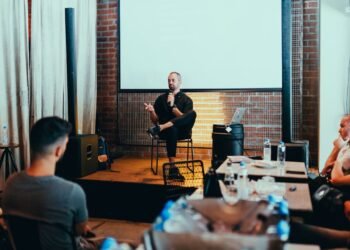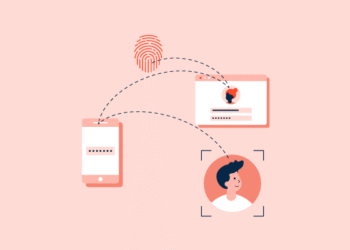
Inside GE Vernova’s plan to bring AI to every employee.
The first step in making AI part of the daily workflow is to make it approachable.
Clarissa Ilyas, global leader of digital technology and transformation communications at GE Vernova, explained how her organization is removing the fear from AI.
“People are excited about it. We don’t talk about it in a way where AI is a threat,” she said. “Employees see AI as a way to reclaim hours of time spent on repetitive tasks, giving them space to focus on work that actually requires human judgment and creativity.”
When it comes to integrating AI into the workplace, Ilyas, who will be speaking during Ragan’s Future of Communications Conference this week, breaks it down into three simple steps: enable, optimize and invent.
- Enable: Proper training and deployment
“First, we focus on how do we train and democratize AI across our workforce?” Ilyas said.
GE Vernova began by providing employees with access to AI platforms and training them on responsible, effective usage. This included Q&A sessions, learning modules and informal sharing.
Next, they mapped out existing workflows and identified repetitive or time-consuming tasks where AI could help.
Then they introduced simple AI agents that could save time or improve accuracy and showed employees how to interact with the agents, clarifying governance and best practices, she said.
The goal is to make AI tools accessible to everyone, whether they’re in engineering, finance or communications.
- Optimize: Improving internal workflows
Once employees were familiar with AI, the next step was improving operations.
When adoption grew, the company empowered teams to build their own custom agents tailored to their unique needs.
GE Vernova developed an internal platform that allowed employees to use AI without needing coding skills.
“It makes it very, very easy to navigate and to leverage and use,” Ilyas said.
AI agents handle tasks like data analysis so employees can focus on higher-value work, she said.
AI can take over repetitive tasks, like pulling reports from multiple sources or analyzing procedural documents, freeing employees to focus on strategic projects, she said.
For instance, GE Vernova deployed a meeting analyzer to help employees summarize discussions and action items quickly after a meeting.
“People spend a lot of time being in a meeting. And then after the meeting, (they’re) trying to do analysis on what happened… We have an agent that will stop our people from spending a lot of time on those things,” Ilyas said.
Departments also built AI agents tailored to their specific workflows. For the comms team, a media-clipping agent helps automatically gather and send relevant news to the team, reducing subscription costs and saving time.
In finance, agents automatically generated and distributed reports, streamlining previously cumbersome processes, Ilyas said.
- Invent: Transforming products and services
The third phase is about applying AI externally or enhancing products and services for customers.
“Once we’ve optimized ourselves using AI, then how do we go and invent?” Ilyas said. GE
Ilyas stressed the importance of transparency and clear communication when rolling out AI tools both internally and externally, saying it’s important to clarify the tool’s function and why the company is using it, she said. Showing impact and asking for feedback is also imperative.
“Wherever we can automate some more mundane tasks so that time can be freed up for teams to do other strategic work, that’s being met with a lot of positive sentiment,” she said.
By identifying real pain points in specific roles and showing how AI can help, employees and customers can quickly see the benefits, she said.
“It’s more about changing the way that we work,” she said. “We should all be…getting on board and looking at how we can make AI work for us, if you will.”
Register now to hear Ilyas’s session, “Workshop: From Gen AI to AI Agents: Taking Employees From Adoption to Integration” during Ragan’s Future of Communications Conference, Nov. 12-14 at the Hyatt Regency in Austin, TX.
Courtney Blackann is a communications reporter. Connect with her on LinkedIn or email her at courtneyb@ragan.com.
The post 3 steps to building a workforce that thinks with AI appeared first on PR Daily.















